Learn All About Scotch Whisky: From Production Practices & Regions to Best Scotch Whisky Glasses & Cocktail Recipes
Scotland is famous for unicorns, bagpipes, golf, kilts, tartans and Harry Potter. But all of the witchcraft and wizardry of Hogwarts can’t compare to the alchemy that occurs when three Scottish native elements — water, yeast, and grain — combine to produce the spirit known as Scotch Whisky.
Scotch Whisky, or just Scotch, has fascinated kings, commoners, and artists for centuries and has inspired the Folk songs “Campbeltown Loch I Wish You Were Whisky” by Andy Stewart and “Row Bullies Row Girls & Strong Whisky” by Brogue, the Jazz standard” Riffin’ The Scotch” by Billie Holiday, and the Rock n’ Roll classic Whisky Man” by The Who.
Understanding Scotch’s history, cultural significance, regions, production process, and types will increase the appreciation of this spellbinding spirit for beginners and enthusiasts alike.
- Learn All About Scotch Whisky: From Production Practices & Regions to Best Scotch Whisky Glasses & Cocktail Recipes
- The History and Cultural Significance of Scotch Whisky
- Scotch Whisky Regions
- Scotch Whisky Production Process
- Types of Scotch Whisky
- Top Scotch Whisky Producers By Region
- Best Glassware for Tasting Whisky
- Whisky Tasting Technique
- Ways to Enjoy Scotch Whisky
- Scotch Whisky Cocktail Recipes
- Rob Roy Recipe
- Rusty Nail Recipe
- Blood and Sand
- Scotch Whiskey Food Pairings: Do's and Don'ts
The History and Cultural Significance of Scotch Whisky
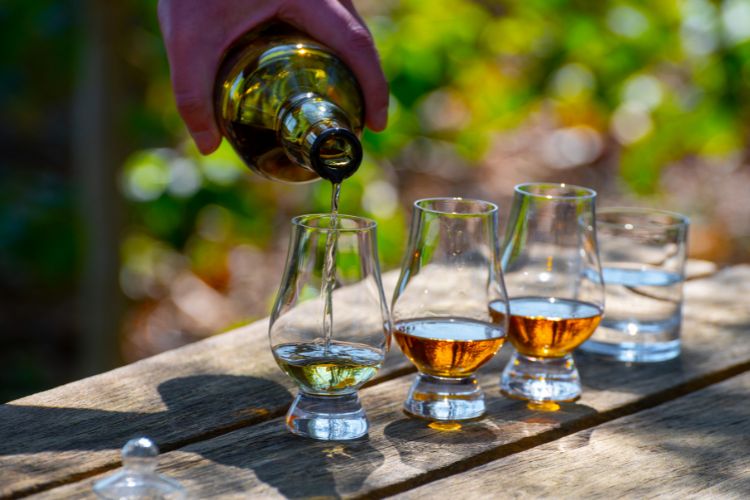
The Scotch whiskey has been distilled in Scotland for over 500 years, with the first official recording of the spirit dating back to 1494 when Friar John Cor of Lindores Abbey in Fife was appointed to make “Uisge beatha,” meaning “water of life,” for James IV, Stewart, then Monarch of Scotland.
Soon after, Britain took control of Scotland, and the “Water of Life” was deemed illegal, with only barber surgeons authorized to sell it as medicine. But even though Scotch was outlawed, It had become a staple in almost every church, household, and business by then. It was so popular that monks and small rural distilleries made it, and clergy members smuggled it in coffins and hid it in the pulpits – nothing was off the limits to keep up with demand.
Fast forward to 1822, and Scotch goes global due to two unrelated events. First, Scotsman Sir Anthony Perrier developed the first continuous still or column still, and, as its name implies, it sustains a constant distillation process. This new still produced a well-balanced, smooth, high-alcohol Whisky in less time, required less maintenance, and was safer than previous distillation methods.
In tandem, the Phylloxera insect destroyed wine and brandy production in France, and the worldwide supply dwindled to almost nothing. In response, Scottish distillers Chivas Regal, Tommy Dewar, and Johnnie Walker started exporting their Scotch Whisky. When France’s spirits industry finally recovered, Scotch Whisky replaced brandy as the spirit of choice, leading to Scotch Whisky’s current popularity in almost every country around the world.
Scotch Whisky Regions
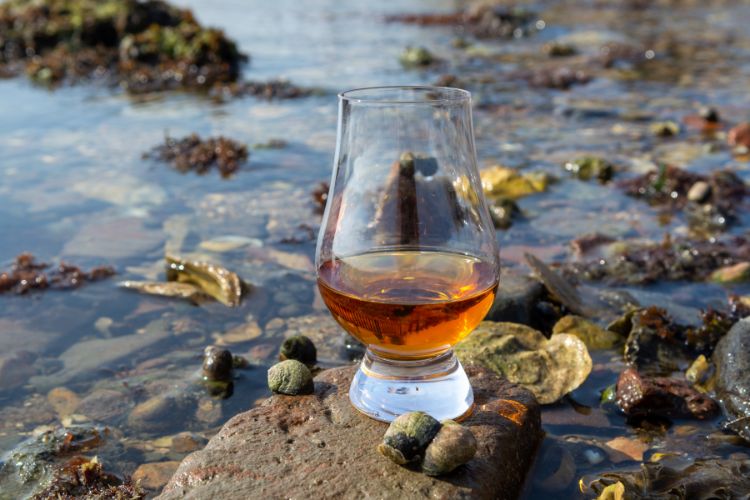
Scotch Whisky is made in five regions: Highland, Speyside, Lowland, Campbelltown, and Islay. Each has a distinct topography and original production tradition that is reflected in the spirits they forge.
RELATED: 10 Best Scotch Whisky Distilleries You Can’t Miss on Your Next Trip to Scotland
Highland is the largest region and includes Speyside and the islands (excluding Islay.) It can be divided into four sub-regions: the Northern Highlands, Southern Highlands, Western Highlands, and the Eastern Highlands. Highlander styles are the most varied. However, they are generally known for being full-bodied with flavors of peat, smoked wood, and hints of leather. They tend to become fruitier as you move south.
Speyside is located in the northeast corner of the Scottish Highlands and is home to over half of Scotland’s malt whisky distilleries. The lush, fertile valleys or “glens” of the river Spey are the heart of single malt whisky distilling, and its “glens” give their names to some of the better-known single malt brands, from Glenlivet and Glenfiddich to Glenfarclas and Glen Grant. The typical flavor profile of these whiskies is fruity, honeyed, spicy, full-bodied and smoky.
The Lowland countryside is characterized by rolling hills and is ideal for growing grain. It is reflected in the region’s single malts, which are lighter in color and body and are made with little to no peat when drying the malted barley. These whiskies are naturally fresh and soft, fragrant and flowery, with cereal and biscuit flavorings.
Campbeltown, formerly the “whisky capital of the world,” with over 30 distilleries running to capacity, now has only three remaining active distilleries: Glen Scotia, Glengyle (aka Kilkerran), and Springbank. These whiskies share a concentrated flavor profile of heavy peat, salt and sea brine in flavor and texture.
Islay (pronounced “eye-luh “), rugged, windswept, and barren, is a small island off Scotland’s southwestern coast. Islay distilleries produce single malt whiskies with intense, peaty, seaweed aromas and robust flavors ranging from medicinal and smoky to peppery and sweet.
Scotch Whisky Production Process
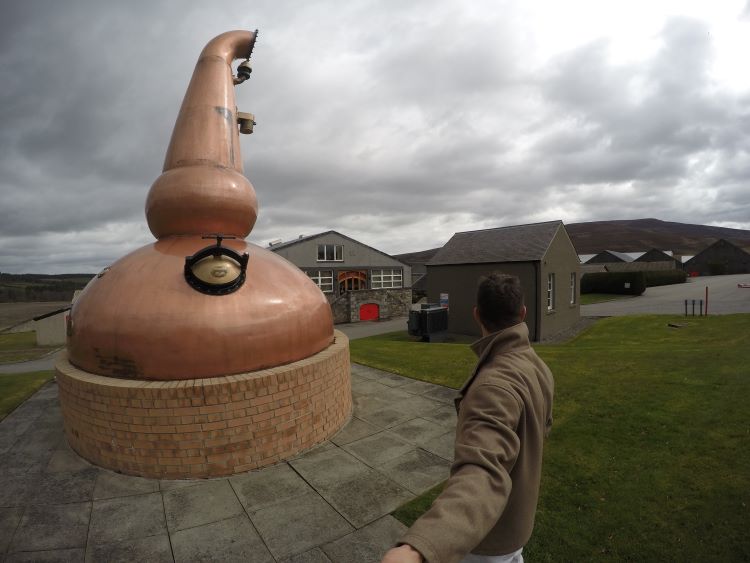
Part of what makes Scotch unique is its double distillation process and the requirement to be matured in oak casks for a minimum of three years to be considered Scotch Whisky. Additionally, by law, Scotch can only be made with Scottish water, yeasts, and grains.
Below are the general steps employed to produce Scotch Whiskey. However, each distillery has its own terroir, water source, grain mash and production techniques influencing the house’s style and flavor profile.
Malting
Malting involves soaking the barley in a water tank for two to three days. The water is drained, and the barley is laid on the malting floor, where it begins to germinate or sprout.
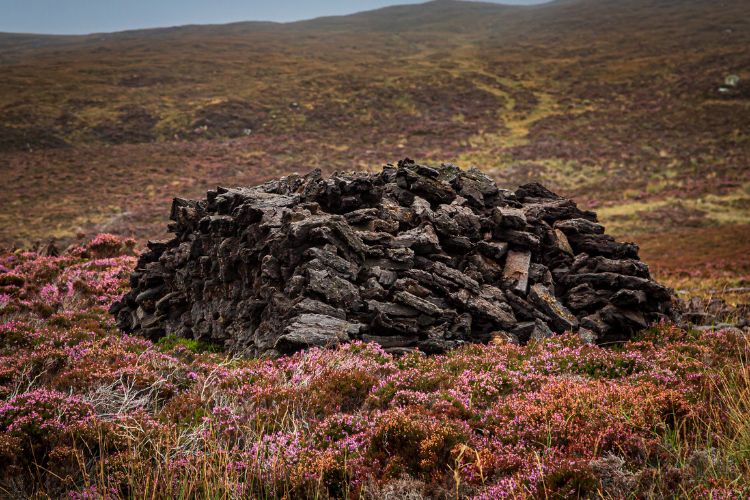
Mashing
The barley is dried into a kiln after germination. After drying, the barley is ground into a powder called a grist. The grist is then mixed with hot water in a mash tun vessel. The hot water induces the starch in the grist to turn into sugar. The liquid, now called wort, is filtered out, and the solids become animal feed.
Fermentation
Distillers combine the wort with yeast, which turns the sugar into beer-like alcohol called wash.
Distilling
In a pot still, the wash is heated until it turns into vapor. The vapor rises to the cooling plant, turning back into a liquid. Scotch is distilled a minimum of two to three times.
Maturation
The liquid, or distillate, is put in oak barrels to mature. Scotch must mature in oak casks for at least three years.
Blending
In this optional stage, distilleries blend Scotches from various casks or distilleries to create different flavor profiles and kinds of Scotch. After blending, the Scotch then moves to the bottling process.
Types of Scotch Whisky
There are two basic types of Scotch Whisky: Single Malt Scotch Whisky and Single Grain Scotch Whisky, from which all blended Scotch whisky is made.
Single Malt Scotch Whisky is made from only water and malted barley at a single distillery by batch distillation in pot stills. Single Malt is considered a high-end Scotch; only about ten percent of Scotch Whisky is Single Malt.
Blended Malt Scotch Whisky is a blend of two or more Single Malt Scotch Whiskies from different distilleries.
Single Grain Scotch Whisky is distilled at a single distillery but, in addition to water and malted barley, can also be produced from whole grains from other malted or unmalted cereals. It is distilled at one single distillery.
Blended Grain Scotch Whisky is a blend of two or more Single Grain Scotch Whiskies from different distilleries.
Blended Scotch Whisky combines one or more Single Malt Scotch Whiskies with one or more Single Grain Scotch Whiskies.
Top Scotch Whisky Producers By Region
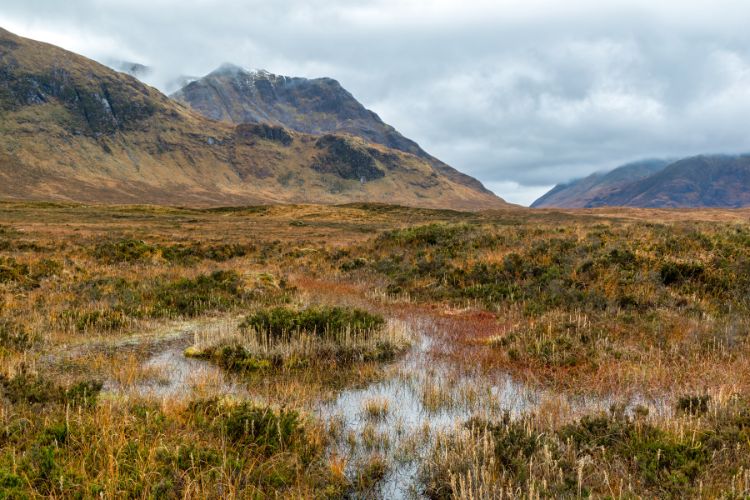
Highland
Glenmorangie is known for its innovative and experimental production processes. Employing the tallest stills in the country and using retired American bourbon barrels for aging are just a few of the practices that have made it the best-selling single malt in Scotland.
Oban is located on the west coast of the Scottish Highlands in a town of the same name. It’s one of Scotland’s smaller and oldest distilleries and only produces Single Malt Scotch Whisky matured in American oak bourbon casks, with select whisky double-matured in Montilla Fino Sherry casks. Oban is known for being light-bodied with gentle fruit and fresh peat with noticeable salty sea breeze quality.
RELATED: What is Sherry? A Guide to Sherry Wine and the Sherry Triangle
Speyside
The Macallan whiskies are among the most highly regarded in the world. It’s the only Scotch distillery with its own Master of Wood. Macallan maintains a selection of approximately 200,000 casks that are primarily Spanish oak sherry casks along with American oak bourbon casks.
Glenfiddich, which means ‘Valley of the Deer’ in Scottish Gaelic, is the world’s best-selling Single Malt Whisky. It is the only single malt aged in three different types of casks—sherry, bourbon, and new oak—and then blended in a solera vat.

Lowland
Auchentoshan makes some of the world’s most delicate whiskies. They are the only Scottish Single Malt distillery to employ triple distillation and mature all their whiskies exclusively in American bourbon casks. These techniques produce sweet aromas of vanilla and coconut, making Auchentoshan known as “the breakfast whisky.”
Glenkinchie is known as the Edinburgh Malt because it’s close to Scotland’s capital. These whiskies express the characteristic lightness and grassy elements Lowland whiskies are known for and demonstrate hints of barley malt, almonds, hazelnuts and beeswax.
Campbeltown
Glen Scotia is one of Scotland’s smallest single-malt Scotch whisky distilleries, producing peated and unpeated whisky, aged in first-fill bourbon casks and Bordeaux red wine casks. These whiskies are known for citrus and cigar box aromas with sea salt, vanilla, oak, ginger, apricot and orange flavors.
RELATED: How to Pair Bordeaux Red Wines with Different Kinds of Food
Springbank is the only Scottish distillery performing all aspects of production – from malting to bottling – on site with human participation at every phase. It is also the only distillery in Scotland to malt 100% of its barley using the traditional floor malting methods. Due to Springbank’s low production volume and unique batch release expressions, it’s difficult to describe a general house style, resulting in Springbank whiskies being some of the world’s most sought-after and collectible spirits.
Islay
Ardbeg is among the peatiest and smokiest of all the Islay single malt whiskies. Its balanced sea spray and dried fruit qualities produce the taste sensation of umami. Young Ardbeg’s ‘house style’ is dominated by peat smoke, smoked fish, and seaweed with a citrus sweetness, while the aged whiskies become rich with cinnamon and aniseed spices, which combine well with the peat.
Laphroaig makes some of the more powerful and smokey single malt whiskies and is arguably the most instantly recognizable single malt Scotch whisky. Its potent characteristics evoke polarizing opinions; for the most part, people either love or hate it. From the peat smoke, aromas reminiscent of oily malt and petrol and extreme medical and iodine notes prevail. The peat is sourced from the Islay coastlands along with peat moss and swamp myrtle that lends ripe citrus and maritime flavors.
Best Glassware for Tasting Whisky
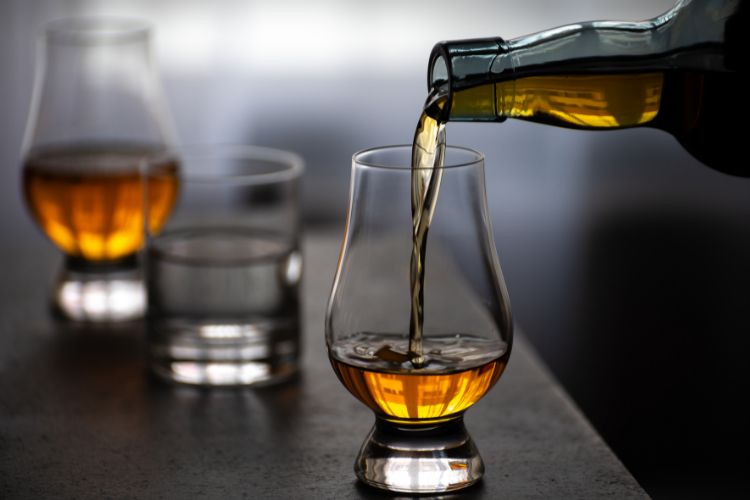
When it comes to spirits, the old saying “the right tool for the job” rings particularly true, and Scotch Whisky is no exception. Specifically designed for tasting Scotch, the Glencairn Glass, also known as the “whiskey snifters,” is the best choice. Its tulip shape traps the spirit’s aromas and concentrates them, letting the scotch breathe, retain its aromas, and reveal hidden fragrances and flavors.
Purchase traditional Glencairn Glasses for Scotch on Amazon
Whisky Tasting Technique
Appearance: Take a moment and look at the Whisky’s appearance, noting its color, clarity, and viscosity. Hold the glass against a neutral background to see its hue and intensity, this will give you insights into its maturation and cask treatment.
Nose: Gently swirl the Whisky in the glass, releasing its aromas. Take small sniffs and think about what scents you’re reminded of. Generally, Scotch emits fragrances of malt, smoke, fruit, spice, and flowers. aromas.
Palate: Take a small sip of the Whisky, letting it coat your entire tongue. Let it linger, and pay attention to its texture, body, and mouthfeel. Think about the flavors it reminds you of and try to identify them. There are four broad, generally agreed-upon whisky flavor profiles that are helpful to consider:
- Fruity: Banana, mango, pineapple, grapefruit, orange, apples, pears, persimmon, and prunes.
- Smoky: Iodine, tar, barbecue fumes, tobacco, cigar smoke, roasted coffee, and dark chocolate.
- Sweet: Toffee, vanilla, honey, butterscotch, ice cream, caramel, and honey.
- Spicy: Chili peppers, cloves, cinnamon, and nutmeg.
Final Assessment: After swallowing, consider the taste’s intensity, balance, and complexity. This gives you indications of the quality and craftsmanship of the Whisky.
Ways to Enjoy Scotch Whisky
Dilute it: Adding a few drops of water to Scotch helps “open up” its spirit—the water brings out flavors and aromas that are overpowered by the alcohol. Although this seems counter-intuitive, scientific evidence supports this practice; when a drop or two of water is added to a glass, molecules on the surface responsible for scotch whiskey’s peaty smell and flavor are released into the glass.
If you’re a frequent whiskey drinker, you should consider using a dropper or pipette to drop water into the whisky. This tool helps measure the amount of water you add. A wide range of droppers is available, from elaborate bottles with gold-plated droppers to a humble eye dropper.
Recommended: Purchase the traditional Glencairn Pipette on Amazon
Ice it: Ice isn’t an unusual preference for whiskey drinkers. It performs the same function as adding a few drops of water to open it up. But, if you’re going to use ice, opt for a large craft cube—they melt slower, keeping your drink from getting so watered down that you can’t appreciate its nuances.
Mix it: Scotch and water and Scotch and soda are classic Whisky mixers. A few other mixtures to consider are Scotch and ginger ale, Scotch Grapefruit juice and soda, Scotch and Coke, Scotch and coconut water, and last but not least, Scotch and pear nectar.
Scotch Whisky Cocktail Recipes
Scotch was used in mixed drinks before the first cocktail was ever mixed. Its peaty, smoky character brings a rich, earthy element to drinks and has a taste and texture you won’t find in any other spirit. Here are a few classic recipes.
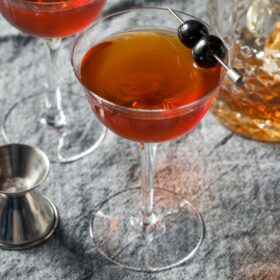
Rob Roy Recipe
Equipment
- 1 Mixing glass
- 1 Bar spoon or stirring stick
- 1 Jigger or measuring tool
- 1 Strainer
- 1 Nick & Nora or cocktail glass
Ingredients
- 2 Ounces Scotch
- 3/4 Ounce Sweet Vermouth
- 3 Dashes Angostura Bitters
- 3 Brandied Cherries
Instructions
- Mixing: Add the Scotch, sweet vermouth, and bitters into a mixing glass filled with ice.
- Stirring: Stir the mixture until well-chilled, ensuring the flavors meld seamlessly.
- Serving: Strain the cocktail into a chilled Nick & Nora or cocktail glass.
- Garnish: Spear brandied cherries and place them in the glass as a garnish.

Rusty Nail Recipe
Equipment
- 1 Mixing glass
- 1 Bar spoon or stirring stick
- 1 Jigger or measuring tool
- 1 Strainer
- 1 Rocks glass
Ingredients
- 1 1/2 Ounces Scotch
- 3/4 Ounce Drambuie
Instructions
- Mixing: Add the Scotch and Drambuie into a mixing glass filled with ice.
- Stirring: Stir the ingredients until well-chilled, ensuring a harmonious blend.
- Serving: Strain the cocktail into a rocks glass over one large ice cube.

Blood and Sand
Equipment
- 1 Cocktail shaker
- 1 Jigger or measuring tool
- 1 Strainer
- 1 Coupe or cocktail glass
Ingredients
- 3/4 Ounce Scotch (choose one that isn't too peated)
- 3/4 Ounce Sweet Vermouth
- 3/4 Ounce Heering cherry liqueur
- 3/4 Ounce Orange juice Freshly squeezed
- 1 Orange Peel
Instructions
- Mixing: Add the Scotch, sweet vermouth, cherry liqueur, and freshly squeezed orange juice into a cocktail shaker filled with ice.
- Shaking: Vigorously shake the ingredients until well-chilled, ensuring a perfect amalgamation of flavors.
- Serving: Strain the cocktail into a chilled coupe or cocktail glass.
- Garnish: Twist an orange peel over the drink to release its oils, then drop it into the glass as a garnish.
Scotch Whiskey Food Pairings: Do’s and Don’ts
Some foods stimulate your taste buds in an enjoyable way, and some foods create a sour and metallic flavor that nobody likes. Whether you’re sipping and snacking for yourself or having a party, be sure to pair your whiskey right.
Scotch Whisky and Food Pairings: Do’s
Cheeses
- Strong and smoky cheeses go well with aged and robust Scotches.
Fruits
- Apples and pears are ideal companions for a range of whiskies.
Nuts
- Sweet nuts for strong Scotch; bitter nuts for sweeter Scotch; roasted nuts for smoky Scotch.
Spread
- Hummus pairs well with full-bodied Scotch.
Savory Treats
- Olives, smoked salmon, and trout complement Scotch nicely.
Meats
- Grilled beef, pork steak, and salmon sans heavy sauces.
Sweets
- Dark chocolate with 70% or higher cacao content.
Scotch Whisky and Food Pairings: Don’ts
Dairy and High-fat Foods
- Generally best avoided, except for cheese.
Fried Foods
- Not recommended as they can clash with Scotch’s flavors.
High-Salt Snacks
- Pretzels and overly salted snacks are not ideal.
Red Sauce Dishes
- Can overpower the subtleties of Scotch.
Garlic-heavy Dishes
- Best to be avoided due to their strong flavors.
Spicy Foods
- Extremely hot and spicy foods can overwhelm the palate.
The Last Call
Scotch Whisky’s rich history and supernatural ability to stimulate the senses are as magical as Scotland itself. No other spirit can transport you to its villages’ seasides’, rivers’ and glens while conjuring the surrounding elements of earth, wind, and fire in a bottle.
Pin This Article to Pinterest for Later
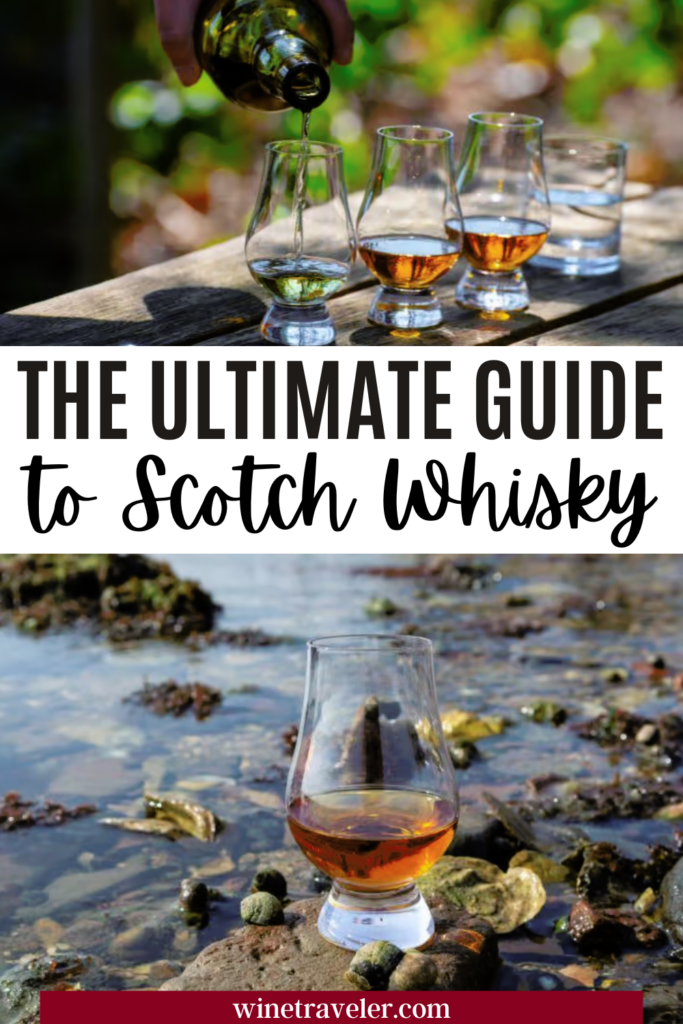
More Guides to Different Kinds of Spirits
What is Mezcal? Guide Everything You Need To Know
What is Tequila? Tequila for Beginners: The Ultimate Guide
You are reading “The Complete Guide to Scotch Whisky:“ Back To Top
Scotch Whisky Regions, Scotch Whisky Production Process, Types of Scotch Whisky, Top Scotch Whisky Producers By Region, Glassware for Tasting Whisky, Whisky Tasting Technique, Ways to Enjoy Scotch Whisky, Scotch Whisky Cocktail Recipes, Scotch Whiskey Food Pairings: best distilleries in Scotland to visit
If you enjoyed this guide, consider joining the Facebook Group to interact with other Winetravelers and for wine travel inspiration around the world. Be sure to follow us on both Twitter and Instagram to stay up to date with our trending content.
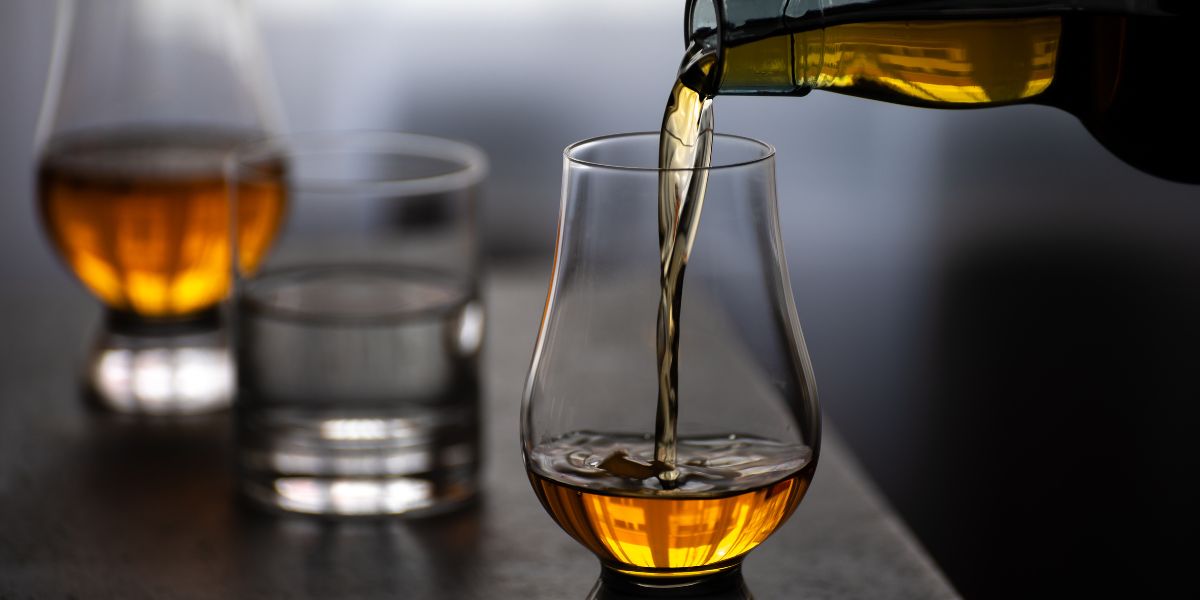
I appreciate your advise that a few drops of water assist “open up” the spirit of scotch by bringing out flavors and smells that the alcohol overpowers. I’ll surely let them know about this because our uncle has been wanting to get a fine scotch whiskey, and my aunt has been planning to order one. Additionally, I’ll look for services that can assist them in purchasing one.
Thank you for your article on the various ways that Scotch is made. I personally look forward to tasting a single malt scotch sometime again in the not too distant future. If I remember correctly, I did experience Glenfiddich many years ago at a party I attended back then. I do remember a smoothness in the overall taste and how nicely it went down. 🙂